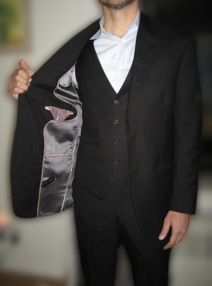Having been in the custom clothing business for more than 17 years (yes, it ‘s a family craft I inherited from my father), I find it quite amusing how a lot of people use the terms “bespoke” and “made-to-measure” interchangeably. They are mistaken.
‘Bespoke’ is actually an English term that dates from the 17th century, when tailors held the full lengths of cloth in their premises.
When a customer chose a length of material, it was said to have “been spoken for”. Hence an outfitter who makes your clothes individually, to your specific personal requirements, is called “bespoke”. This is unlike “made-to-measure”, which simply uses a basic, pre-existing template pattern, which is then adjusted to roughly your individual measurements.
The first thing I’ll do is discuss with you what type of suit you are looking for, its uses and which type of style and fit would be most suitable for you. Then a cloth is chosen from the full range available at Mood Fabrics along with the silk liners/ buttons and trims.
More than 15 measurements and figuration photos are taken from the customer. Then a personal hand pattern is drafted and cut from scratch- not the basic, adjusted template pattern, as used by so many other tailors these days.
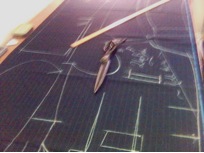
|
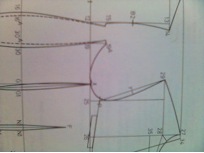
|
Using your pattern, the cloth is then cut and trimmed, along with the finest linings and silks available. A single tailor is then given the parts of the garment to sew together, from the earliest stages to the final, complete suit. Each suit is completely hand-made, even down to the button-holes.
How to pick a Bespoke Outfitter:
1. If you’re told its “Bespoke” make sure it is. Ask if he is the actual cutter. Will he cut you a personal pattern? There are many tailoring firms who merely receive your details and then effectively make you a ready-to-wear suit- using a standard template, not an individual pattern- that’s been slightly adjusted.
2. But the cutter is only part of the equation. At this point we involve this next rare (& getting rarer) breed, the tailor, who actually sews the garments by hand. In most instances you will find that so called Bespoke Tailors have the suits done in a ready to wear factory where multiple hands touch the garment (also known as CMT-Cut, Make & Trim). Whereas in true bespoke the garment is given to a single skilled tailor who expresses himself through the work and contributes hugely to the final outcome of the garment.
3. Ask him what kind of fittings does he offer for a true Bespoke Suit. The standard method is a 3-step process:
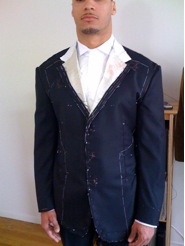 a) Skeleton Fit (1st fitting) |
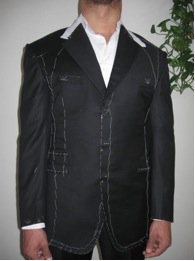 b) Forward Base Fit (2nd fitting) |
4. Make sure your coat has a “floating” canvas, this you should be able to feel, floating between the facing & forepart. A hand-canvassed coat must be expected at this level. Check out for the obvious- hand-sewn buttonholes, hand-sewn edges, and make sure the buttons are made of animal horn, not plastic.
5. Don’t be convinced by the narcotic effect of labels and glossy magazine write-ups as they mean nothing: they are writers, not cutters. Their world is about PR, not about the actual stitching.
For more information on my Bespoke service and to discuss your sartorial needs, from a business suit/shirt to full evening wear, visit Kamaal Kadri on his website www.kamaalkadri.com. His studio at 327 West 30th Street (between 8th-9th Ave.), Suite 6A, New York, NY 10001. Telephone (646) 688-3171 Cellphone (646) 704-9919. Email Kamaal kam-ez@kam-ezdesigns.com, to discuss pricing.
If you would like to submit an article for review to be posted as a Guest Blogger please click HERE.

